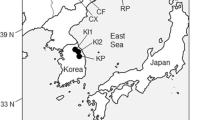Abstract
A collection of six Tunisian wild cardoon (Cynara cardunculus L. subsp. flavescens Wiklund (syn. C. cardunculus var. sylvestris (Lam.) Fiori) populations was evaluated using nineteen morphological traits. Analysis of variance and correlation coefficient were performed based on XLSTAT version 2011 and principal components analysis using the past program. Significant differences between populations were noted for most morphological traits in four main groups. The first group, positively correlated to the two axes, is represented by “Zriba”, the second group; including population of “Twirif” is positively correlated to the component 2 and negatively correlated to the component 1 while the third group, is composed of the populations of (Bahra and wad mliz) were positively and negatively correlated to the component 2 and component 1, respectively. Finally, the fourth group is negatively correlated to the two axes and is composed of the populations of (Enfidha and Bouficha). The dendrogram based on Nei’s genetic distance using UPGMA method, show genetic drift between the studied populations.




Similar content being viewed by others
References
Acquadro A, Portis E, Lee D, Donini P, Lanteri S (2005) Development and characterization of microsatellite markers in Cynara cardunculus L. Genome 48:217–225
Basnizki J, Zohary D (1994) Breeding of seed-planted artichoke. Plant Breed Rev 12:253–269
Campbell BT, Williams VE, Park W (2009) Using molecular markers and weld performance data to characterize the Pee Dee cotton germplasm resources. Euphytica 169:285–301
Fernandez J, Curt Dolores M, Luis Aguado P (2006) Industrial applications of Cynara cardunculus L. for energy and other uses. Ind Crops Prod 24:222–229
Fiori A (1904) In: Fiori A, Beguinot A (eds) Flora analitica d’Italia, vol III, p 380
Lahoz I, Fernández JA, Migliaro D, Macua JI, Egea-Gilabert C (2011) Using molecular markers, nutritional traits and field performance data to characterize cultivated cardoon germplasm resources. Sci Hortic 127:188–197
Pagnotta MA, Mondini L, Codianni P, Fares C (2009) Agronomical, quality, and molecular characterization of twenty Italian emmer wheat (Triticum dicoccon) accessions. Genet Resour Crop Evol 56:299–310
Pignone D, Sonnante G (2004) Wild artichokes of south Italy: did the story begin here? Genet Resour Crop Evol 51:577–580
Portis E, Acquadro A, Comino C, Mauromicale G, Saba E, Lanteri S (2005) Genetic structure of island populations of wild cardoon [Cynara cardunculus L. var. sylvestris (Lamk.) Fiori] detected by AFLPs and SSRs. Plant Sci 169:199–210
Robba L, Carine MA, Russel SJ, Raimondo FM (2005) The monophyly and evolution of Cynara L. (Asteraceae) sensu lato: evidence from the internal transcribed spacer region of nr DNA. Plant Syst Evol 253:53–64
Rotondi A, Magli M, Ricciolini C, Baldoni L (2003) Morphological and molecular analyses for the characterization of a group of Italian olive cultivars. Euphytica 132:129–137
Rottenberg A, Zohary D (1996) The wild ancestry of the cultivated artichoke. Genet Resour Crop Evol 43:53–58
Rottenberg A, Zohary D, Nevo E (1996) Isozyme relationships between cultivated artichoke and the wild relatives. Genet Resour Crop Evol 43:59–62
Sonnante G, De Paolis A, Lattanzio V, Perrino P (2002) Genetic variation in wild and cultivated artichoke revealed by RAPD markers. Genet Resour Crop Evol 49:247–252
Sonnante G, Carluccio AV, Vilatersana R, Pignone D (2007) On the origin of artichoke and cardoon from the Cynara gene pool as revealed by rDNA sequence variation. Genet Resour Crop Evol 54:483–495
Thormann CE, Ferreira ME, Camargo LEA, Tivanga JG, Osborn TC (1994) Comparaison of RFLP and RAPD markers for estimating genetic relationships within and among cruciferous species. Theor Appl Genet 88:973–980
UPOV (2001) Union internationale pour la protection des obtentions végétales. Genève, 2001. Principes directeurs pour la conduite de l’examen des caractères distinctifs, de l’homogénéité et de la stabilité de l’artichaut (Cynara cardunculus var. scolymus L.)
Wiklund A (1992) The genus Cynara L. (Asteraceae-Cardueae). Bot J Linn Soc 109:75–123
Author information
Authors and Affiliations
Corresponding author
Rights and permissions
About this article
Cite this article
Khaldi, S., Khelifi, M. & El Gazzah, M. Analysis of genetic variability in six Tunisian wild cardoon (Cynara cardunculus L. subsp. flavescens Wiklund) populations. Genet Resour Crop Evol 60, 723–729 (2013). https://doi.org/10.1007/s10722-012-9869-8
Received:
Accepted:
Published:
Issue Date:
DOI: https://doi.org/10.1007/s10722-012-9869-8




